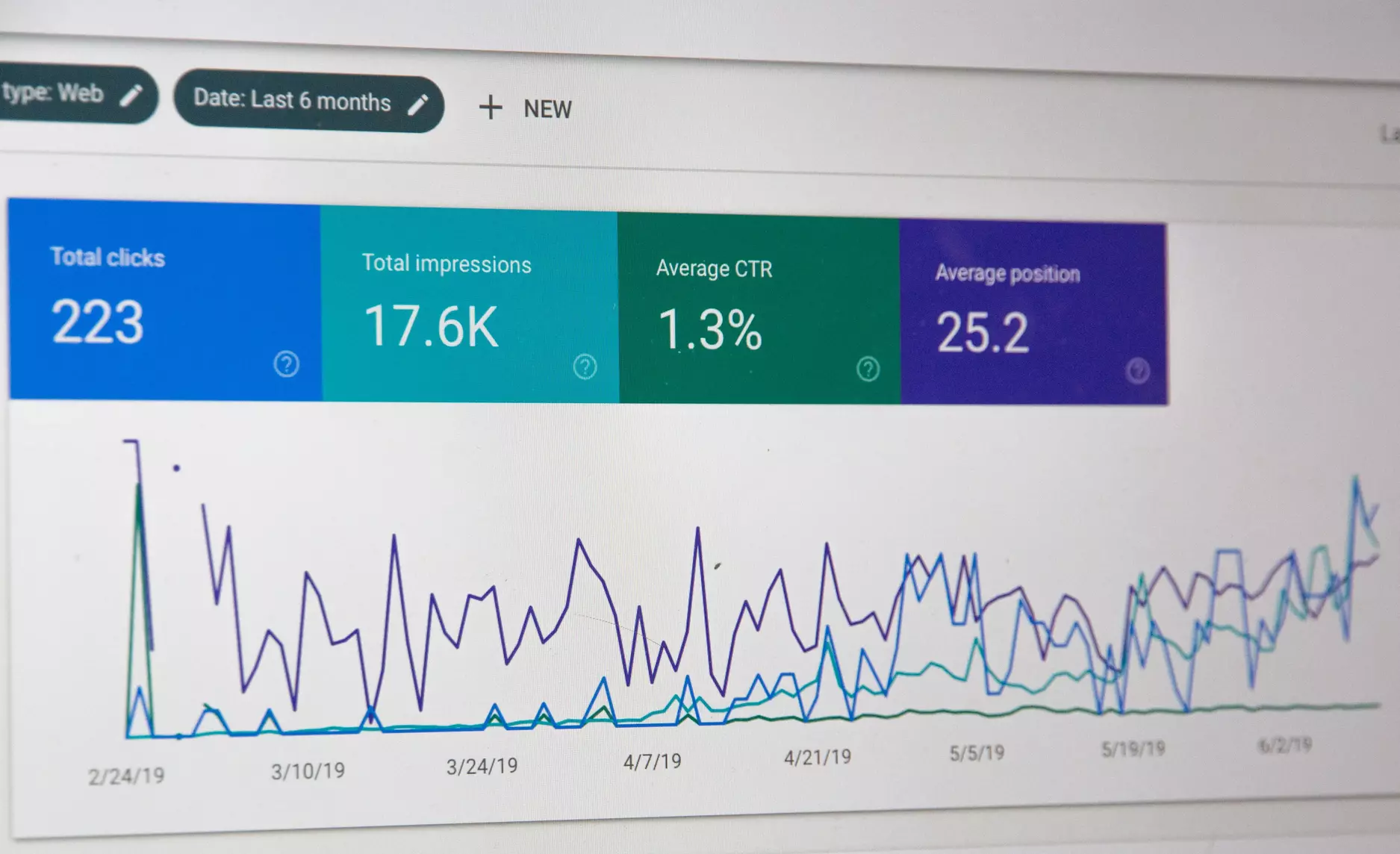
KPIs, or key performance indicators, are measurable values that show how well you are achieving your email marketing goals and objectives. But it is most important to know which metrics are important, so by knowing them we can scale our email marketing and make valuable decisions. In this blog, we'll discuss the most important email marketing key performance indicators. So let's dive in.
If you answered yes to any of these questions, then you need to learn and implement SEO in the correct way.
In this blog post, we have shared some of the best practices for SEO that can help you boost your website's visibility and rankings in 2023 and beyond.
Understanding SEO:
What is SEO?
SEO stands for search engine optimization, which is the process of improving your website's visibility and rankings on search engines like Google, Bing, or Yahoo.
As we know, search engines are the main source of online traffic because they help users find the information, products, or services they are looking for.
Why is SEO so important?
Search engines use complex algorithms to crawl, index, and rank websites based on various factors, such as relevance, quality, authority, and popularity.
That’s why SEO comes in. It involves various strategies and techniques that help search engines understand the content and relevance of a website, making it more likely to appear in search results for relevant queries.
The higher your website ranks on the search results pages, it will be able to get more clicked by the users, and the more traffic leads and customers you can generate.
Here are some of the reasons why SEO is so important.
-
SEO can help you reach your target audience, as you can optimize your website for the keywords, topics, and questions that they are searching for.
-
SEO can help you increase your brand awareness, as you can showcase your expertise, value proposition, and unique selling points to the users who are looking for solutions that you offer.
-
SEO can help you build your credibility and trust, as you can demonstrate your authority, reputation, and social proof to the users who are evaluating your website and comparing it with your competitors.
-
SEO can help you improve your conversion rate, as you can optimize your website for the user intent, user experience, and user journey, and guide the users from awareness to action.
-
SEO can help you reduce your marketing costs, as you can generate more organic traffic, leads, and customers without paying for ads or other channels.
After understanding the importance of it, here are some best practices for SEO, so let's dive in.
Best Practices for SEO
SEO practices are a set of guidelines that can help you improve a site's organic rankings in search engines.
By following search engine optimization strategies, you can increase your website's visibility and attract more organic traffic. Here are some of the best practices for SEO:
1. The role of keyword research in SEO
Keyword research is the process of finding and analyzing the words and phrases that your target audience is searching for on search engines.
It is one of the best practices for SEO because it can help you understand user intent, user behavior, and user demand and optimize your website accordingly.
Here are the key aspects of the role of keyword research in SEO
(a). Relevance to Content:
Identifying relevant keywords ensures that your website's content aligns with what your target audience is searching for.
Because this helps search engines understand the context of your pages and match them with user queries.
(b). Improved Rankings:
Optimizing your content around well-researched keywords increases the likelihood of your pages ranking higher in search engine results pages (SERPs).
They consider the relevance and quality of content when determining rankings. When content satisfies user intent it sends a positive signal to the algorithm that helps you to rank higher in search engine results pages (SERPs).
(c). Targeting User Intent:
Understanding user intent is crucial for delivering the right content to your audience.
Keyword research helps you identify the specific needs and intentions behind user queries, allowing you to create content that satisfies those needs.
(d). Competitive Analysis:
Analyzing keywords also involves understanding what keywords your competitors are targeting. This insight can help you identify gaps in your content strategy and find opportunities to compete effectively in your industry.
(e). Content Planning and Creation:
Keyword research guides the creation of new content. By incorporating relevant keywords naturally into your content, you can improve the chances of search engines recognizing the value of your pages and ranking them appropriately.
(f). Long-Tail Keywords:
Long-tail keywords are specific and often less competitive than broader terms. By identifying and targeting long-tail keywords, you can attract more targeted and qualified traffic to your site.
(g). User Experience:
Crafting content around targeted keywords enhances the overall user experience. When users find the information they're looking for easily.
It reduces bounce rates and improves the chances of user engagement and conversions.
(h). Adaptation to Trends:
Keyword research is not a one-time process. It should be an ongoing practice to adapt to changes in user behavior and industry trends.
Staying updated on popular and emerging keywords ensures that your content remains relevant.
2. On-page optimization: Optimizing your website's content and structure
On-page optimization is the process of optimizing your website's content and structure for the search engines and the users.
It can help you improve your website's relevance, quality, authority, and popularity, and boost your website's visibility and rankings. It includes optimizing content elements, site architecture elements, and HTML elements.
Some best practices for on-page SEO include
(a). Title Tags:
-
Include your main keyword in the title tag.
-
The title should be concise (around 50-60 characters) and catchy to encourage clicks.
-
Make sure each page has a unique title tag.
(b). Meta Descriptions:
-
Create compelling meta descriptions that summarize the content of the page.
-
Include relevant keywords but focus on providing value to users.
-
Keep meta descriptions within 150-160 characters.
(c). Meta Descriptions:
-
Create compelling meta descriptions that summarize the content of the page.
-
Include relevant keywords but focus on providing value to users.
-
Keep meta descriptions within 150-160 characters.
(d). URL Structure:
-
Create clean and user-friendly URLs.
-
Include the target keyword in the URL if possible.
-
Avoid using numbers, symbols, or unnecessary parameters in the URL.
(e). Header Tags (H1, H2, H3, etc.):
-
Use heading tags to organize your content hierarchically.
-
Include the primary keyword in the H1 tag and use H2, H3, etc., for subheadings.
-
Provide a logical and organized hierarchy for a better user experience.
(f). Content Optimization:
-
Create high-quality, relevant, and valuable content for your audience.
-
Use the target keyword naturally throughout your content.
-
Maintain a good balance between keyword optimization and readability.
-
Aim for comprehensive content that answers user queries.
(i). Images and Alt Text:
-
Optimize images for the web by compressing them and using the appropriate file format (JPEG, PNG, etc.)
-
Include descriptive alt text for images and incorporate relevant keywords.
(j). Internal Linking:
-
Create a logical internal link structure to guide users and search engines through your website.
-
Use descriptive anchor text for internal links.
(k). External Linking:
-
Link to authoritative and relevant external sources to provide additional value.
-
Ensure that external links open in a new tab to keep users on your site.
(l). Mobile Optimization:
-
Ensure your website is mobile-friendly and responsive.
-
Google uses mobile-first indexing, so prioritize mobile optimization for better rankings.
-
Optimize your website for fast loading times.
-
Compress images, leverage browser caching, and consider a Content Delivery Network (CDN).
(m). Regularly Update Content:
-
Keep your content fresh and relevant by updating it regularly.
-
Add new information, update outdated content, and republish as needed.
3. Off-page optimization: Building high-quality backlinks and improving domain authority
Off-page optimization is the process of improving your website's authority and popularity by having other websites link to or mention your website.
It can help you rank higher in search engines because it takes into account the number and quality of links and mentions your website receives as a sign of its trustworthiness and relevance.
Some effective off-page SEO strategies include:
(a). High-quality backlinks:
-
Focus on acquiring backlinks from relevant and authoritative websites.
-
Quality matters more than quantity; A few high-quality backlinks can be more beneficial than many low-quality ones.
-
Diversify your link profile by getting links from different sources.
(b). Guest blogs:
-
Publish high-quality guest posts on reputable websites in your industry.
-
Make sure the content is valuable, relevant, and provides real information.
-
Include a natural, relevant link to your website in your author's bio or content.
(c). Participation in social networks:
-
Be active on social media platforms relevant to your industry.
-
Share your content, interact with your audience, and create a community.
-
Social signals can indirectly influence search engine rankings.
(d). Broken Link Building:
-
Identify broken links on authoritative websites in your niche.
-
Contact the site owner or administrator and suggest replacing the broken link with a link to your relevant content.
(e). Content Marketing:
-
Create high-quality, shareable content that naturally attracts backlinks.
-
Promote your content across different channels to increase its visibility.
4. Technical SEO: Enhancing website speed, mobile-friendliness, and user experience
Technical SEO is the process of enhancing your website's speed, mobile-friendliness, and user experience, which are factors that affect your website's user satisfaction, user retention, and user loyalty, and are also ranking factors for search engines.
Here are some best Practice for Technical SEO
(a). Website Speed:
Optimize Images: Compress and resize images to reduce file sizes without compromising quality. Use efficient image formats (JPEG, PNG) and consider lazy loading for images below the fold.
Minimize HTTP Requests: Reduce the number of elements (images, scripts, stylesheets) on a page to minimize the number of HTTP requests required to load the page.
Browser Caching: Enable browser caching to store static resources on visitors' devices, reducing the need to download them on subsequent visits. Use Content Delivery Network (CDN) – Use a CDN to distribute your website's static content between servers around the world, improving load times for users around the world.
(b). Mobile-Friendliness:
Responsive Design – Make sure your website is responsive and adapts to different screen sizes and devices. Google prioritizes mobile-friendly websites in its rankings.
Mobile Page Speed: Optimize your website speed for mobile users. Consider AMP (Accelerated Mobile Pages) to load mobile content faster.
(c). User Experience (UX):
Intuitive Navigation: Design a clear and intuitive website structure with easy navigation. Users and search engines should easily understand the hierarchy of your content.
Page Layout and Readability: Format content to make it easier to read. Use headings, subheadings, and short paragraphs. Make sure you have a clean and uncluttered design.
Internal Links – Implement logical and useful internal links to direct users to relevant content. This also helps search engines understand the structure of your website.
Page Speed (again) – In addition to their impact on SEO, fast-loading pages contribute to a positive user experience. Users are more likely to stay and interact with a fast website.
(d). Technical Site Structure:
Robots.txt: Use a robots.txt file to guide search engine bots on which pages to crawl and which to avoid.
Canonical Tags: Implement canonical tags to resolve duplicate content issues and indicate the preferred version of a page.
(e). Security:
HTTPS: Switch to HTTPS for a secure connection. Google considers HTTPS as a ranking factor and creates trust among its users.
Regular security audits: Conduct regular security audits to identify and remediate vulnerabilities. A secure website is crucial for both user trust and SEO.
5. Staying up to date with SEO trends and algorithm updates.
For any website owner or marketer looking to maintain or improve their search engine rankings, staying up to date on SEO trends and algorithm updates is crucial.
SEO trends and algorithm updates are changes that search engines make to their criteria and ranking methods that can impact your website's performance on search results pages.
Implementing these 5 SEO best practices is a great starting point to rank higher on Google. However, you need to track your progress, be consistent with implementation, and most importantly, be patient.
Results don't always appear immediately, but if you trust the process and consistently try to improve your SEO, you should see gradual results over time.
Each of these tips can help you improve your SEO, but I recommend following them all. These best practices for SEO are effective ways to increase traffic to your website without spending a fortune.
What to read next

